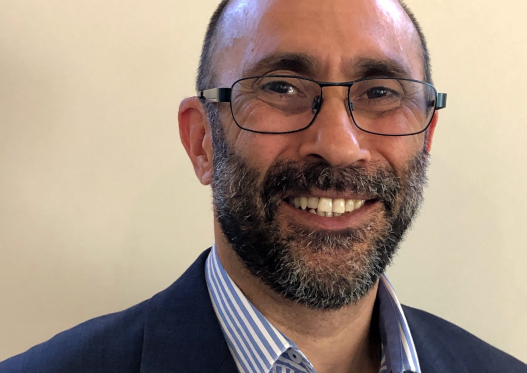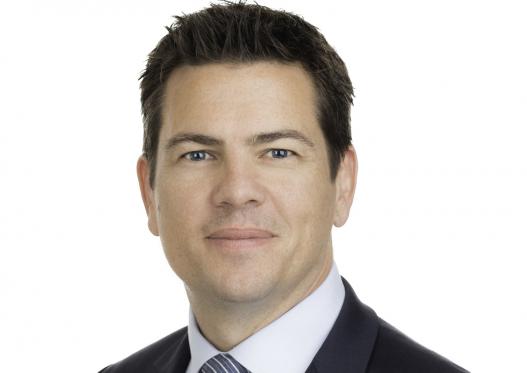On 2 February 2023, it was reported that the Australian Federal Police had arrested the Sydney-based members of an international money laundering syndicate that had laundered $150 million between 2018 and 2022, seizing $29 million in cryptocurrency, luxury watches, handbags, jewellery, cars, firearms, and more importantly, restraining 20 properties throughout Sydney, including two homes in the eastern suburbs with a combined value of $19 million and a $47 million block of land near the, under construction, Western Sydney Airport[ii]. It also was alleged that this criminal group was highly entrepreneurial, because in addition to laundering their own money, they allegedly had found a way to charge, not pay, a fee of 10% to those who assisted them in their laundering activities (Parkes-Hupton 2023).
The methods this syndicate employed were very similar to the money laundering operation that had existed in Vancouver, British Columbia, for many years and which is known as the “Vancouver Model”[ii],[iii]. Notwithstanding that these arrests were a great achievement for the Australian Federal Police, the operation that was uncovered, as shall be shown later in this paper, was a small fish in a very big pond.
Money Laundering Involves Three-Stages
Money laundering is the process of taking dirty money, which is the proceeds of criminal activity, and making it clean, and, importantly, in the process obscuring and camouflaging the illegal activities that were the source of the funds. To achieve this feat, criminal organisations typically follow a three-stage process[iv]:
- Placement, which is the process of separating the money from the criminal activity and integrating the funds into the financial system,
- Layering, which is the process of transferring the monies through the financial system via a series of transactions in a manner to disguise the trail of the funds and to foil pursuit by the authorities, and
- Integration, which is accessing the funds from what appears to be a legitimate means.
Money Laundering is Very Big Business
The United Nations Office on Drugs and Crime (n.d.) estimates that between 2% and 5% of global Gross Domestic Product (GDP) is laundered annually[v] which, using World Bank data for global GDP in 2021 - US$96.53 trillion[vi] - means that between approximately US$1.93 trillion and US$4.8 trillion is laundered annually.
However, not all monies generated by criminal enterprise is laundered. It is estimated that only 25% of the AU$53.7 billion in criminal proceeds generated in the 2021 financial year in Australia was laundered professionally, with the remainder of criminally generated funds used to purchase assets using methods that disguise both the origins of the money and the identity of the purchaser (Australian Institute of Criminology 2022)[vii]. Thus, the arrests in Sydney in 2023 was of a relatively small money laundering syndicate compared to the estimated amount of money laundered in Australia annually.
For those who undertake the process of laundering money for organised crime the fee is quite attractive. It is estimated that the total fee charged against Australian criminal organisations by money laundering syndicates is 6.5% of the amount laundered (i.e., $873.3 million in the year to June 2021) (Australian Institute of Criminology 2022)[viii].
Vancouver Model Explained
The process begins in China, where a Chinese citizen wishes to go on a gambling holiday in Vancouver Canada[ix].
Because China’s currency (the yuan) is pegged against the US dollar, the Chinese Government has instigated a “closed” capital account policy, which means money cannot move freely into or out of China unless strict rules are followed[x]. Furthermore, to counter money laundering, as well as other nefarious transactions, in 2016 the Chinese government introduced tighter transaction reporting limits (50,000 RMB – AU$10,700 – from 200,000 RMB), and a requirement on banks to report any overseas transaction of US$10,000 by individuals[xi].
So that the Chinese national can circumvent the foreign exchange laws and take their money out of the country, under the Vancouver model they enter into a relationship with a Chinese-domestic criminal syndicate which has links with another criminal organisation in Vancouver, Canada.
The Chinese national deposits funds, in RMB, into the mainland China bank account of the Chinese-domestic criminal syndicate for the purposes of repaying a Canadian dollar loan in Canada (German 2018)[xii].
The Chinese national flies to Vancouver and at the agreed time meets an individual from the Vancouver criminal enterprise who provides the Chinese national with a duffel bag that is full of Canadian dollars (Comply Advantage n.d.)[xiii], i.e., the loan amount. The amount in the duffel bag is equivalent to the amount deposited into the bank account in China, at the exchange rate agreed, LESS a commission for the provision of this service (Comply Advantage n.d.). Presumably, this commission was at the same rate the Sydney-domiciled money laundering syndicate charged i.e., 10%. At this point, the money that is given to the Chinese national is dirty.
The Chinese national walks into the casino and exchanges the duffel bag of money for gambling chips (Comply Advantage n.d.). Once the money is converted into gambling chips the money has been washed and is clean. Oddly, nobody questions why an individual would walk into a casino with a large bag full of money. Presumably, because CA$7 billion was laundered in the province of British Columbia in 2018 (Lindsay 2020) there were so many Chinese nationals entering casinos carrying duffel bags full of money that doing so was a usual occurrence.
After making a few bets, the Chinese national is able to exchange the chips for cash and leave the casino with the money to spend as they please (Comply Advantage n.d.).
But that process is only half the story because the Vancouver criminal organisation is yet to receive payment from the Chinese criminals.
Although China has strict restrictions on the movement of funds by individuals across its border, corporate transactions on its current account[xiv] can be made. Such transactions deal with the payment of monies in exchange for the provision of goods and services and, in this instance of money laundering, relies on the underground banking system[xv] to transfer funds illegally across borders. Thus, through a series of transactions that relate to the purchase of goods and services, using the underground banking system as facilitators, money is moved through multiple companies and potentially multiple jurisdictions, presumably jurisdictions were regulation is light, until it eventually finds its way into Canada where it is deposited into the bank account of the Vancouver criminal enterprise.
These transactions require effort. Invoices need to travel in the opposite direction to justify the funds that are deposited. Furthermore, the inter-company transactions need to be of differing value lest it become easy for the authorities to track, the pathway the money travels needs to appear like legitimate suppler / customer relationship transactions and be incorporated with legitimate transfers, and no bank account can go into debit. A process that is more complex than popular culture would let us believe[xvi].
Australian Anti-Money Laundering Controls
Australia has an anti-money laundering environment where financial institutions are required to report suspicious transactions to the regulator, Austrac, in accordance with the legislation. Under the legislation, the Anti-Money Laundering and Counter-Terrorism Financing Act 2006 (Cwth) and the Anti-Money Laundering and Counter-Terrorism Financing Rules, financial service providers subject to the legislation are required to have a AML/CTF compliance program, which includes conducting customer due diligence.
Where you can Learn More?
For those who are interested in learning more about Australia’s anti-money laundering regime, FINSIA offers a microlearning course on the subject.
[i] Parkes-Hupton, H., 2023, ‘Australian Federal Police dismantle alleged international criminal syndicate based in Sydney’, Australian Broadcasting Commission, 2 February, Australian Federal Police dismantle alleged international criminal syndicate based in Sydney - ABC News, cited 21 May 2023
[ii] Lindsay, B, 2020, ‘Vancouver model for money laundering unprecedented in Canada, B.C. inquiry hears’, Canadian Broadcasting Commission, 26 May, Vancouver model for money laundering unprecedented in Canada, B.C. inquiry hears | CBC News, cited 21 May 2023
[iii] In fact, the term Vancouver Model was coined by Macquarie University’s Professor John Longdale. Moreover, Professor Longdale was concerned, rightly as it seems, that the Vancouver model would find its way to Australia.
[iv] United Nations Office on Drugs and Crime, n.d., ‘Money Laundering’, Overview (unodc.org), cited 21 May 2023
[v] United Nations Office on Drugs and Crime, n.d., ‘Money Laundering’, Overview (unodc.org), cited 21 May 2023
[vi] The World Bank, n.d., ‘GDP (current US$)’, GDP (current US$) | Data (worldbank.org), cited 21 May 2023
[vii] Smith, R.G., Hickman, A., 2022, ‘Estimating the costs of serious and organised crime in Australia, 2020-21: AIC reports: Statistical Report 38’, Australian Institute of Criminology, Australian Government, Estimating the costs of serious and organised crime in Australia, 2020–21 | Australian Institute of Criminology (aic.gov.au), cited 21 May 2023
[viii] Smith, R.G., Hickman, A., 2022, ‘Estimating the costs of serious and organised crime in Australia, 2020-21: AIC reports: Statistical Report 38’, Australian Institute of Criminology, Australian Government, Estimating the costs of serious and organised crime in Australia, 2020–21 | Australian Institute of Criminology (aic.gov.au), cited 21 May 2023
[ix] Comply Advantage, n.d., ‘Money Laundering – the Vancouver Model’, Vancouver Model of Money Laundering | ComplyAdvantage, cited 21 May 2023
[x] Government of Canada, n.d., ‘Foreign Exchange Controls in China’, Trade Commissioner Service, Foreign Exchange Controls in China (tradecommissioner.gc.ca), cited 21 May 2023
[xi] Export.gov, 2019, ‘China – Foreign Exchange Controls’, International Trade Administration, U.S. Department of Commerce, 30 July, Foreign Exchange Controls in China (tradecommissioner.gc.ca), cited 21 May 2023
[xii] German, P.M. 2018, ‘Dirty money: an independent review of money laundering in Lower Mainland casinos conducted for the Attorney General of British Columbia’, 31 March, Government of British Columbia, German_Gaming_Final_Report.pdf (gov.bc.ca) cited 21 May 2023
[xiii] This duffel bag could not hold too much money and it would be difficult to carry. Unlike in the movies, where criminals are able to carry with ease many millions of dollars in a suitcase, because of its weight (1 note weighs approximately 1 gram), large amounts of physical money require large muscles to carry, and the weight of a significant amount of money would break the handle of a suitcase. The largest Canadian banknote is $1000, which means that CA$1,000,000 would weigh 1kg. However, most criminal transactions involving cash presumably would be conducted in smaller denominations, say $20 and $50 notes. Therefore, $1,000,000 in $20 notes would weigh 50kg. This problem with the weight of money for organised crime was why the largest Euro banknote was reduced from Eur100 to Eur50.
[xiv] For an excellent explanation on the current account and capital account refer to: Reserve Bank of Australia, n.d., ‘The Balance of Payments’, The Balance of Payments | Explainer | Education | RBA, cited 21 May 2023
[xv] The underground banking system is unlicensed operators providing banking services to, generally, an ethnic clientele, where the “bank” relies on close relationships, political, geographical, or family connections to conduct business (German 2018).
[xvi] I cite the Netflix series Ozark as an example, where money is transferred through bank accounts of over 60 entities using random combinations conducted by a sophisticated computer program. No doubt the program to control money laundering transfers are sophisticated, but the incorporation of invoices travelling in the opposite direction and the variation in amounts transferred and the requirement to ensure that no bank account goes into debit adds additional layers of complexity.









